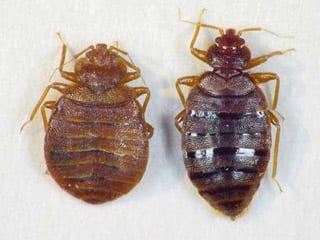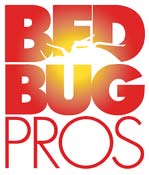How to Get Rid of Bed Bugs in Chicago
How To Get Rid Of Bed Bugs
January 17, 2016
What happens if I don’t treat for Bed Bugs?
April 11, 2016
The 2016 numbers are in and once again Chicago is the champion! Yes, we are the #1 Bed Bug infested city in American. If only our football and baseball teams were as lucky! Bed Bugs are extremely difficult pests to eliminate without the assistance of a certified Pest Control expert. Consider using a local, Chicago Area company that specializes in Bed Bug extermination. Specialized companies invest all of their time, resources, equipment and expertise to develop and refine solutions to eliminate bed bugs from a home, apartment or commercial property. The Illinois Department of Public Health offers literature and online information for dealing with the Bed Bug epidemic throughout Illinois.
First, your property thoroughly inspected. Finding active, bed bug hot spots through a visual or independent canine inspection will help the Bed Bug extermination expert to diagnose where to target chemical sprays and powders and/or a heat treatment. In most cases, bed bugs are found within six to eight feet of an infected mattress and box spring. Typically, bed bugs hide in the seams of a mattress and between the box spring and bed frame. Headboards are also suspect as Bed Bugs hide within screw holes and between any cracks that offer protection. Baseboards, hanging artwork and electrical outlets behind the head of the bed also require thorough inspection as they are common hiding areas for adult bugs, nymphs and bed bug eggs. Bed Bugs are also nocturnal so finding heavy activity during daytime hours may be challenging without a canine inspection. For more information on how to find bed bugs click here.
Once an inspection is complete, your Bed Bug extermination expert will make recommendations. Most Chicago Bed Bug eradication companies offer two common treatment options. The first is a chemical option consisting of a chemical pesticide application to affected areas… this includes a mattress and box spring, headboards, dressers, nightstands, electrical outlets and over baseboards and carpeting. Furthermore, Bed Bugs are effective hitchhikers as it is common to find additional bed bug activity in a couch, loveseat and cloth chairs in a living or family room. Pesticides are additionally applied to suspect furniture pieces to kill and thwart further population growth.
Chemical applications are effective over time as pesticides have a residual effect. The uncertainly is whether the initial chemical treatments contact bed bug eggs which hatch every 10-14 days. A second and, in most cases, a third chemical application are needed to end the life cycle and solve the Bed Bug problem for good. Prior to the first treatment (and in between applications) the home owner, landlord or tenant must follow certain guidelines to assist with the success of chemical treatments. All bedding and clothing should be bagged and washed and/or dried on high heat for a minimum of 30 minutes. Additionally, the entire area should be inspected daily and vacuumed with regularity. The homeowner may also invest in mattress and box spring encasements as well as interceptors placed under the posts or feet of the bed frame. Lastly, the less clutter the better… leaving few areas for Bed Bugs to hide presents the best opportunity to eliminate them at every stage of growth.
The second option is to treat an area with eco-friendly, thermal heat. Preparation guidelines are provided to the homeowner or tenant for the total eradication in just one treatment. Once the area is thoroughly prepared for treatment, heaters and fans are positioned in each room. Heat is especially effective as Bed Bugs are attracted to the initial ‘warm up’ phase of the treatment. Room temperatures of 95-100 degrees spur Bed Bug activity but Bugs are quickly paralyzed looking for relief as temperatures hit higher levels. At 120-125 degrees Bed Bugs virtually die on contact. The room temperature will slowly rise to 135 degrees over the course of the treatment. Effective treatments call for room temperatures of 120+ degrees for a minimum of three hours. This allows the heat to penetrate walls, baseboards and all furniture items and clothing, effectively killing Bed Bugs at every stage, including Bed Bug eggs. For more information on the biology of bed bugs click here.
Treatment options vary in price. Typically, the chemical options are significantly lower than thermal heat but require 4 to 6 weeks of multiple treatments and compliance to be effective. Thermal heat is two to three times more expensive but it does provides a one day extermination solution which is highly effective. Talk to your pest control expert for more information and to discuss the option and plan that work best for your situation. For more information regarding treatment options and benefits click here.


